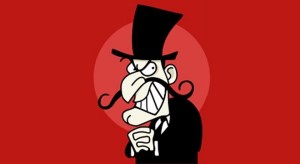 I recently finished the tenth revision of my cop thriller novel. I’ve been working on it for five years. It’s been through a million cuts and folds. The original is no longer even recognizable in it, and I thought I had finally gotten it right. So I submitted it to my critique group, a wonderful gang of fellow-writers. Five of them signed up for the read.
I recently finished the tenth revision of my cop thriller novel. I’ve been working on it for five years. It’s been through a million cuts and folds. The original is no longer even recognizable in it, and I thought I had finally gotten it right. So I submitted it to my critique group, a wonderful gang of fellow-writers. Five of them signed up for the read.
The oral critique went well. There were lots of useful comments and questions about character, theme, language and structure. They all finished the read, bought the story, liked the characters, and had positive evaluations. Two major criticisms came out of the two-hour session (supplemented by detailed written notes from each person).
The first was a problem I have been aware of from the beginning. My main character (MC) has a self-contradictory interior. Years ago he started out as a tough-guy, Chandleresque cop. That seemed unoriginal and stereotyped and I decided I wanted to have a MC with a genuine character arc. But he’d still be a tough cop, at least in the beginning. As events unfold, he becomes more reflective until in the end, he questions his basic values and changes his attitudes.
I always wondered if that was believable. Cops are a psychological type, self-selected for the profession by their personality (According to a clinical psychologist friend of mine who works with police, they have consistently elevated scores on MMPI scales 4, 6, and 9). So, would a high-functioning, successful cop really become sensitive and reflective as I had portrayed my MC?
One of my critique readers was certain it would never happen. “Is this guy supposed to be a tough detective or a social worker?” he growled. He didn’t like the way the character changed over time. “The genre cop and the literary character are incompatible types,” he advised. He didn’t think the character was believable.
He may be right, but that was the point of this character and this project. Could I write a tough cop who was more than a two-dimensional stereotype? In movies of tough cops they always include a couple of scenes where he’s tenderly putting his children to bed, just to show that he’s a human being. That’s tokenism. I fast-forward past those scenes. I wanted my character to really be a complex person, interesting enough to engage with. So I’m letting that criticism stand.
The other main criticism, however, was devastating.
“You’ve got the wrong black hat at the showdown,” my colleague said. I didn’t understand at first.
“What is the big showdown scene?” he asked. “The gunfight at the O.K. Corral?”
“Well, it’s spread over several chapters. The corrupt narcotics lieutenant intimidates MC and controls his son, but then MC finds the hard evidence of corruption, then finally MC watches corrupt lieutenant do the perp walk.”
“So there is no single shootout scene?”
“No.”
“But the lieutenant is the black hat?”
“Yes.”
“What about the big drug kingpin?”
“Also a black hat.”
“But he doesn’t appear in the shootout.”
“There is no shootout.”
“I think that’s exactly why you picked the wrong black hat. Kingpin is the real black hat, but he just fades into the background. No shootout. Lieutenant is just a local bully, not important.”
As soon as my colleague said that, I knew it was right. I had identified the wrong antagonist in my story! How was that even possible? The author should always know, at the very minimum, who is the good guy and who is the bad guy. I had made an inconceivably stupid error in story structure.
Part of the error arose from having gone through so many major revisions with this story. Over the years, characters have been added and cut, whole story lines cut, settings changed, everything. In the process of logging the trees, I lost sight of the forest.
But also, thinking back to the creation of the tale, I had in mind a kind of stealthy and reclusive antagonist modeled along the cunning East German boss, Karla, nemesis to protagonist George Smiley in Le Carre’s Tinker, Tailor, Soldier, Spy. I didn’t want my antagonist to be on stage, but rather, to be a lurking menace like Karla. As a result, I realized, in my novel, MC and villain never face each other, not even once. That’s why there was no shootout scene. I was so successful keeping Kingpin in the background that I overlooked him!
This is why you must have a trusted critique group of experienced writers. You can’t get enough separation on your work to see it well. I am forever grateful for my group. But now I have some difficult surgery to perform.
